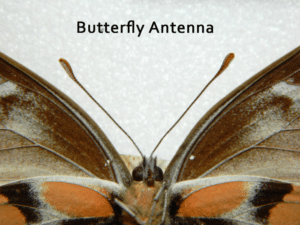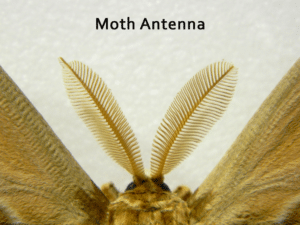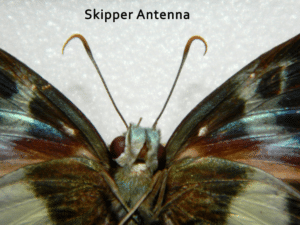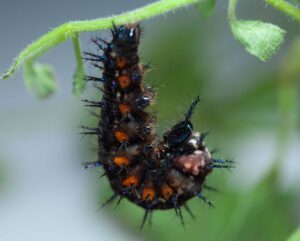What’s the difference between Butterflies, Skippers and Moths?
Many people think butterflies are brightly coloured, delicate insects that fly during the day and moths are dull coloured insects, with fat, hairy bodes, that fly at night. Skippers are grouped with the true butterflies because they are day flyers but have fat fury bodies like moths. There are other physical differences but while these differences do apply generally, there are also many exceptions.
Activity
Moths fly at night, Butterflies and Skippers fly during the day.
Exceptions: There are many day flying Moths and a few Butterflies and Skippers fly in the early evening.
Antennae
Moths have either long pointed or fern like antenna. Butterflies have long thin antenna with clubbed tips. Skippers have long thin antenna with clubs tapering to pointed hooks on the tip.
Exceptions: Several families of moths have antenna with clubs, most notably the Castniidae Family of Sun Moths
Wings
Moths front and back wings are held together with a structure called a frenulum. Butterflies and Skippers Wings are not joined.
Exceptions: Australia has the only skipper in the world with a frenulum, the Regent Skipper, also many moths do not have a frenulum.
Resting posture
Moths hold wings flat when resting or tented over the body. Butterflies hold wings together above body. Skippers front wing are held at a different angle to the back wings.
Exceptions: Many butterflies also rest with the wings flat.
Pupation
Moth caterpillars spin a cocoon made of silk, around their body and pupate inside. Butterflies and Skippers spin a pad of silk onto a stem or leaf then hang on the pad and form the pupae.
Exceptions: Lots of moths don’t spin a cocoon and many Butterflies and Skippers spin a silken shelter combined with leaves.
Because all groups do not have distinct differences, they are not divided into suborders.









